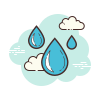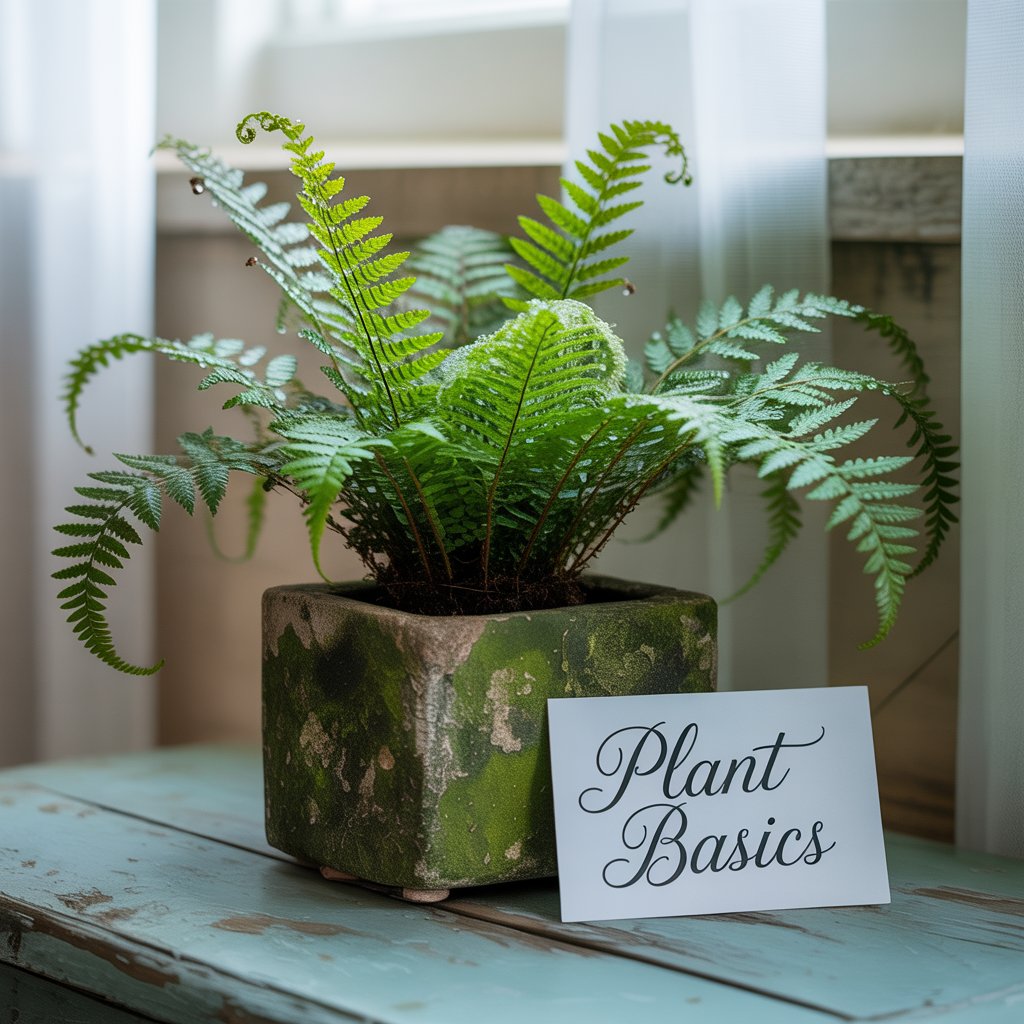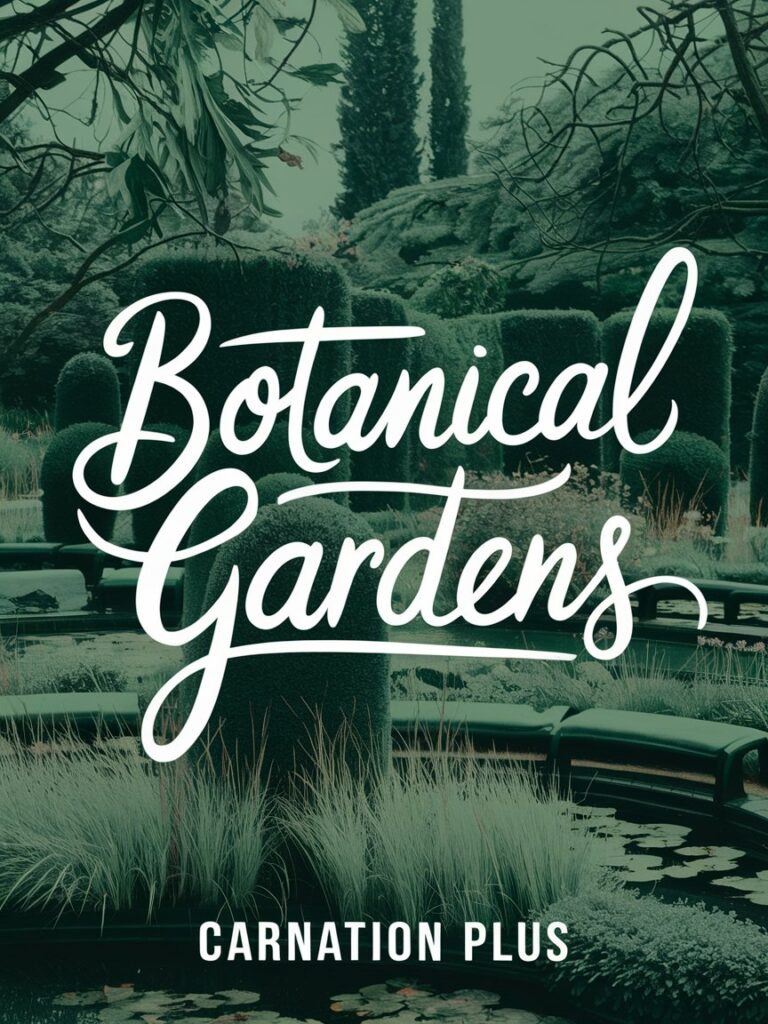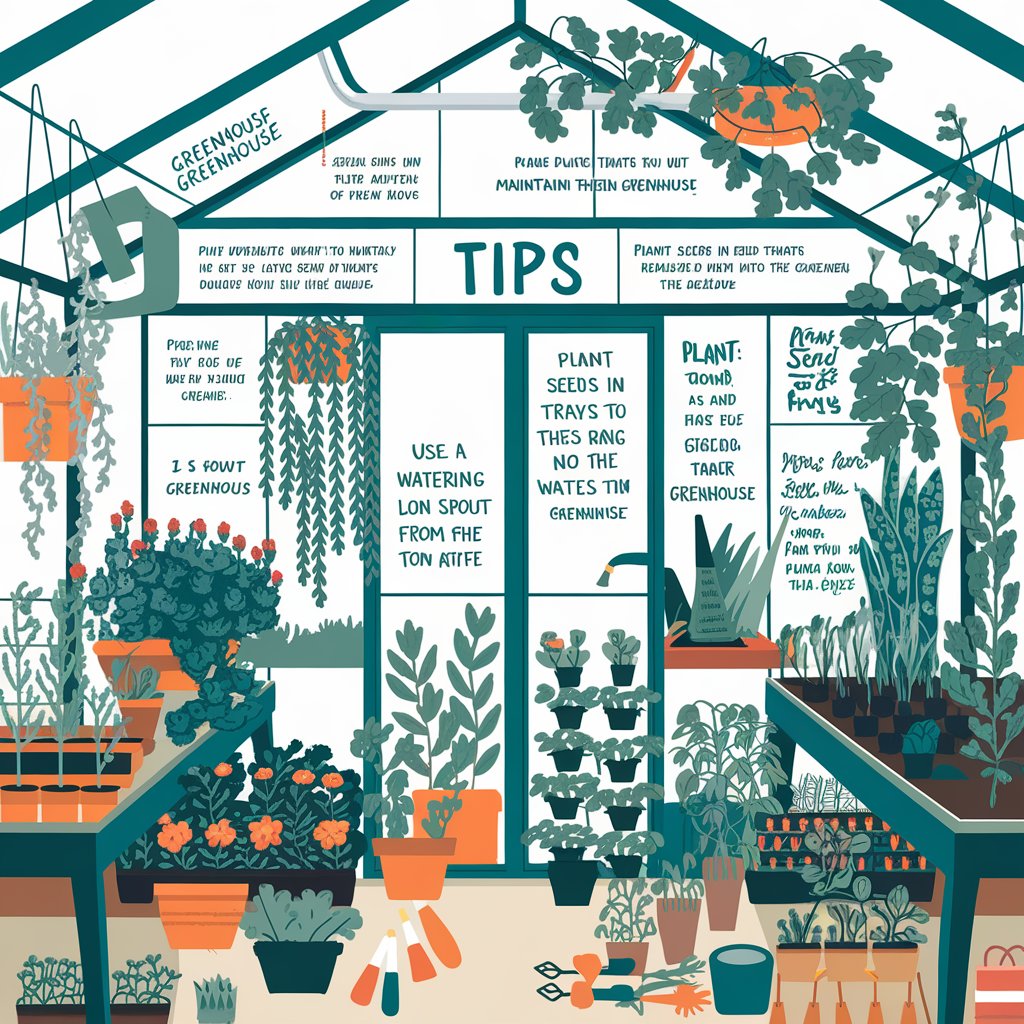Plant Basics,
Land plants came into existence on this planet more than 800 million (80 crores) years before humans did. They had it all figured out before we arrived. They also grow in the wild on their own and do just fine. Then why do they need to be cared for in a home garden?
The reason is simple: because they may not be growing in their actual habitat where they have evolved to survive, and if at all they happen to be growing in their native geography, they might be in a plastic pot in a living room next to the air conditioner where, their microenvironment will be completely different despite being in the city where they have grown for thousands of years. Microenvironment is the immediate environment around the plant, and it is made up of factors like the availability of sunlight, water, humidity, etc. Additionally, plants, especially trees, can develop roots which are 30 ft or deeper over several decades to access groundwater even when no one waters the intentionally. That’s certainly not possible in a suburban highrise of Mumbai.
FUNFACT: Deepest root system ever documented so far is of shepher's tree (Boscia albitrunca ), with roots going deeper than 70 metres in deeper than 70 metres in the kalabari Desert. trees scarce groundwater. this is a feature that helps them sustain long dry spans when there is no drop of rain for months.
So, what does a plant need? Primarily water, sun and nutrients! Each plant has a different requirement for these three resources. An experienced gardener (or social media version: plant mom or plant daddy) is one who develops an intuition about what their plant needs without googling its name or its care tips. The difference between killing and caring for any plant should be completely dependent on these three resources. But when you try to grow a plant outside of its natural habitat, the requisite resources double in number. I will use this chapter to introduce and discuss the six individual resources.
- Sun
- Temperature
- Nutrients
- Water
- Soil
- Tools
Plant Basics also need air to survive. They use carbon dioxide (CO,) from the air to make food and oxygen (0,) to respire like us. This process is called photosynthesis. On the other hand, respiration is the process where energy is produced from the food that the plants make. While the food is mainly prepared by the green parts of the plant (such as the stem and leaves), respiration is carried out by other parts too, such as the roots. The reason for not including air as a separate resource is threefold. (1) Following the chain of logic, plants basically use air to get macronutrients, which can be covered as part of nutrients. (2) The assumption that your home garden is on planet earth (not in space or a vacuum capsule) is a reasonable one. (3) The motivation behind this book is to simplify, not complicate.
 SUN
SUN
If you have seen a rainbow or passed sunlight through a prism, you would have noticed that the light splits into
seven colour bands. These bands are collectively referred to as VIBGYOR (V for violet, I for indigo, B for blue, G for green, Y for yellow, O for orange and R for red), and each band is connected to a certain wavelength of light. In simple terms, light has different wavelengths,
and these wavelengths appear to us in the form of colour bands. All these bands taken together are called a spectrum. Plants use different parts of this spectrum to grow. While the blue part is responsible for the vegetative growth, i.e., growth of stem and leaves, the red part of the spectrum is known to help in fruiting and flower production
Man-made light sources that are used in indoor such as incandescent tube light, fluorescent lights ai LED. differ in the intensity of the colour bands as compared to that of the sun spectrum. The intensity of red and blue light is the maximum in sunlight whereas the intensity of green and blue bands is still closer to man-made lights such as the white LED lights. Therefore, the plants that are grown for their leaves and stem, such as monstera, pothos , peace lily, etc., can be to some extent grown indoors. But plants that we grow for their flowers and fruits, such as daisies, marigolds, lemons, etc., can be grown only near a very well-lit window, outdoors or under a grow light that mimics
sunlight’s spectrum
A common symptom to assess if your plant is not getting enough sun is the yellowing of leaves. Plants kept indoors or in dark spaces start losing their green pigment and turn yellow. In this case, try moving it to a brighter space for at least ten days and observe if the new leaves come out healthy or not. Despite the move, if the plant continues to lose colour, then try rectifying the other factors detailed later in this chapter. Since plants cannot speak and communicate their life problems, a good way to understand them is by observing them. They respond to stressful conditions by losing pigment colour and develop droopy leaves and brown edges. Leaf burns can be noticed too.

In overexposed conditions, i.e., when the sun is too intense for the plant, you will again notice yellow leaves, but this time they will show brown burnt spots. In such a scenario, move them to a lesser-lit area. Broadly speaking, by looking at the leaf texture and shape, you can judge if that plant will be ‘sun loving’ or ‘sun hating’. Plants such as aloe vera with waxy coating and thick leaves have evolved to grow in sunny spaces where the sun is directly falling on the plant for at least 4-5 hours, whereas plants such as peace lily that have broad, delicate and thin leaves cannot withstand intense sunlight and prefer filtered light or shade. I am using these examples to communicate the
idea of how different plants have different sunlight requirements, but this is not a universal rule.
Alternatives: Among the necessary resources, managing sunlight conditions is the hardest. I get it. Buying a house is hard enough but buying one that works for your orchids may be a tall ask. However, you can manipulate the amount of light in your balcony or home with some easy steps.
Dealing With Intense Sunlight Conditions
- Use a shade cloth to filter out light. A common one is a green-coloured fabric made from HDPE (high- density polyethylene, a kind of plastic) and nylon, This material helps in reducing the intensity of sunlight falling on plants and reduces the
evaporation rate from the soil. It is popularly used in greenhouses and plant nurseries. One can install it in a balcony, on a terrace, or in a lawn as well. - Plant arrangement. If you are looking for something simpler and if you have only a few plants, try using bigger and sun-loving plants on the outskirts of balcony/window and place the small delicate ones in
their shade Jugaad.
Dealing With Low Sunlight Conditions
- Use artificial grow light. These lights can imitate the sun’s spectrum and help the plant grow better in low-light conditions.
- Tube lights! They may also work in certain conditions. Further, tube lights do not heat up on usage. Therefore, you can install them in your plant shelf and keep the plant closest to the light, thereby helping maximize light absorption.
 TEMPERATURE
TEMPERATURE
Most plants can survive in the temperature range of 10-35°C, but where the plant evolved to sustain itself determines the temperature ranges in which it will thrive. To ‘thrive’ implies conditions that do not stunt a plant’s growth in any way. Simply speaking, its stems and leaves are able to grow, flowers are able to bloom and fruit production is possible. Extremely low or high temperatures can damage plant cells and interfere in its daily processes, thereby hampering plant growth. Obviously, the availability and intensity of sunlight has a direct bearing on temperatures, but their interaction can create different conditions. For example, aloe vera, a succulent evolved to grow in desert-like conditions, enjoys direct sun and high temperatures (above 25°C) while the English rose also likes good sun but thrives in
lower temperatures (under 30°C).
I have placed the plants in the forthcoming chapter in three categories.
- Low Temperature: Plants that prefer 0-15°C or winter-loving plants. They may survive lower or higher temperatures as well, but key life events such as fruiting, seed germination or flowering will be triggered only in this temperature range.
- Medium Temperature: Plants that like 15°C-35°C. These are typical tropical foliage plants that perform their best in terms of vegetative and reproductive growth in this temperature range.
- High Temperature: Plants that like 30°C-45°C. These are generally the hydrophobic tropical plants that like high temperatures as they have adapted to arid environments.
To not complicate things, in the chapters on flowering and edible plants, I have categorized areas of country based on temperature and rainfall as Regin 1 and Region 2. Region 1 (including Haryana, Punjab, Rajasthan, Gujarat, Madhya Pradesh, Uttar Pradesh, Bihar, Jharkhand, and West Bengal) experiences spring in February-March, extreme summer during May-July, mild monsoons in July-August, autumn in October and extreme winter in December-January For Region 2 (including Maharashtra, Karnataka, Kerala, Chattisgarh, Odisha, parts of Tamil Nadu. Andhra Pradesh, Telangana, Assam, Nagaland, and parts of Manipur), I am referring to spring in February-
March, mild to extreme summers from May-July, heavy monsoon rains in July-September, mild autumn in October and mild winters in November-January. This classification, I confess, is not the best and does no justice to the geographical diversity of our country, but it should work to convey the idea of what can be grown when. In this classification of Regions 1 and 2, I have not included states, such as Jammu and Kashmir, Ladakh, Meghalaya and parts of Uttarakhand, Himachal and Mizoram, that face extreme weather conditions. Hope
it helps.
Finally, but most importantly, home gardeners need to be aware of temperature conditions inside their home or the ambient temperature of the place where they are going to keep a plant. Further, it is important to note that temperature fluctuates within a house. If you have a glass window in your space, then the temperature of the space might actually rise higher than the temperatures outside because glass tends to trap heat, whereas windows with air conditioners installed on them can get very cold when the AC is turned on.
 NUTRIENTS
NUTRIENTS
Plants, like humans, need a regular dose of nutrition. The primary nutrients they need are carbon (C), nitrogen (N), Oxygen (0), phosphorus (P) and potassium (K). These nutrients may not be available to the plant in simple forms. Naturally, plants get their dose of nutrition from either soil or air and then break them into simpler forms so that they become usable. Carbon is taken from the air in the form of carbon dioxide during photosynthesis. Plants also take in oxygen from air for energy production, like we humans do, in a process called respiration. What’s worth knowing for any home gardener is that plant growth is restricted by macronutrients that come from the soil-N, P and K-which is why most commercial fertilizers are sold as NPK.
Without getting into the complexity of the many chemical processes that these macronutrients are involved in, let me share what their absence typically means for a plant. A nitrogen-deprived plant will fail to achieve full size and may show yellow pale leaves. Inadequate phosphorus makes a plant weak and delays maturity. Potassium deficiency hampers reproduction
lesser flowers, lesser fruits-and may lead to scorching curling and/or yellowing leaves.
Apart rom macronutrients, plants also need micronutrients, i.e, nutrients that are required in small amounts, like calcium (Ca),manganese (Mn), iron (Fe 0boron (B), copper (Cu), zinc (Zn), chlorine (Cl), nickel (N), cobalt (Co), sodium (Na) and silicon (Si). However unlike macronutrients, absence of micronutrients i unlikely to threaten a plant’s survival. Therefore, let ue limit our attention to macronutrients. In the natural world, as plants decay and animals poop. nutrients are released into the soil and are taken un by a plant through a phenomenon known as nutrient cycling. But for plants that are grown in pots or in home setups, this natural process of decay and nutrient cycling is not as active. Any existing nutrients in the soil are either taken up by the plant or washed away with water with time. So, we need to regularly replenish the soil by adding more nutrients.
Commercially available sources of nutrients are either ‘man-made’ inorganic compounds or ‘natural organic compounds. Both are referred to as fertilizers. Man-made fertilizers are processed in a factory or in a lab (urea San example, used extensively in commercial farming). Natural fertilizers, which I highly recommend for home gardeners, refer to compost or manure. Compost 1s decayed food waste and manure is decayed cattle poop, both of which are great organic sources of nutrients.
The only advantage that man-made fertilizers offer is ease of nutrient access tor plants, as ‘pre-processing? ensures that nutrients are available in a form that plants require. When you add factory-made phosphorus or nitrogen to the plant, nutrients that remain unused
will still be partly washed away. Why? Because plants cannot take up nutrients all at once. Nutrients in natural fertilizers, such as compost or manure, don’t have the same problem. Natural fertilizers require insects and microbes (tiny organisms that you can’t see with naked eyes) to break these nutrients into simple forms for plant intake. This process is slow, but it’s a sustainable way to fertilize your plants. An added advantage is that some of these insects also help with soil aeration and drainage, which basically makes your soil healthier.
The frequency of addition of these nutrient supplements depends on the kind of plants you are growing. For home gardening, I can think of three kinds of nutrient feeders.
Heavy Feeders
These are plants that need a lot of nutrients and good quality fertilizer but may differ in terms of frequency with regard to fertilization needs. I have further divided them into two categories:
- Regular Heavy Feeders
The kind that grow quickly, attaining their full size in a few months and needing fertilizer monthly. Common example: most vegetables. - Seasonal Heavy Feeders
These are plants that attain their maximum vegetative growth, i.e., stem and root growth, in a few years but flower and fruit only in a certain season. For such plants, add fertilizer when you start seeing flowers on them, and if you already know about when this plant flowers, then preferably add fertilizer before the flowering season. The idea is to supplement the plant with nutrients before it gets burdened with the reproductive growth pressure (in the form of flowering flowers and fruits). This will help improve and fruiting. For such plants, use superior quality compost or manure because if the plant doesn’t get enough nutrients, the blooming will be compromised and you will have to wait for the next flowering season, which might be only once a year. Common example: most fruiting trees.
Medium Feeders
Think of these as plants that show a few inches of growth per season (-three months). They would need to be fertilized at least once every season. Common example: most foliage plants.
Rare Feeders
Plants that can sustain well in low nutrient conditions. These are plants that grow only a few centimetres per season. You can even add old compost for such plants once a year. Given their low nutrient requirement, using fresh compost will be a waste of resources. Common example: most succulents.
 WATER
WATER
Nater has three primary functions for a plant: 1) It Carries nutrients from one part of the plant to another while moving through tubes called xylem. 2) It is a key component in several chemical reactions, photosynthesis being one of the most important ones. 3) It is responsible for temperature regulation in the plant. Water evaporation through small holes called stomata helps in temperature regulation.
The challenge is to hit the right balance, which is why when you complain of yellowing leaves, any plant doctor would first ask you to look for watering problems. In the absence of water, all plant cells will shrink and lose their ability to carry out their functions. On the other hand, overwatering will lead to water-clogged air pockets, limiting oxygen availability for plant roots. Prolonged exposure to any kind of water stress, over- or underwatering can cause yellowing of plant leaves and eventual death. Generally, underwatering plants show brown edges, yellow and paper-dry leaves, while overwatered plants not only have yellow leaves, but the leaves also seem mushy on touching. Every plant has different water requirements: some plants like moist soil, others prefer dry soil. For example, snake plant (a succulent) prefers dry soil, so even if you’ve forgotten to water this plant for a month, it will most likely not die. However, an aglaonema, a large-leaf delicate plant, will definitely die if not watered for a month since it has not evolved to endure long dry spells. I cannot tell you the exact days for watering because the microenvironment for every home varies. However, the plants covered in this book are largely classified into three watering categories:
Occasional Watering
Plants classified as xerophytes have adapted to grow in low-water conditions such as deserts and snow-covered regions. You can try watering such plants once every fifteen days, but I will let you in on my secret: get a small potted aloe vera plant (or any plant under five inches in leaf length) and be prepared to let it die. It won’t. Here’s what you need to do.
Step 1: Do not water the plant for five days.
Step 2: Gently pull out the plant from the pot along with the soil. Turning the pot upside down will help.
Step 3: Touch the bottom-most soil and see if it feels sticky.
Step 4: Put the plant back the way it was.
Now on to the analysis. If the soil at the bottom doesn’t feel sticky, you would know that the fifth day is a great day to water such a plant. If the bottom soil feels sticky, however, repeat steps 2-4 every alternate day. When it stops feeling sticky, that is the number of days it takes for soil to completely dry in your place. The reason I suggested aloe vera for this learning experiment is because it is a hardy plant and this regular pulling out will not kill it. Nobody is born with a green thumb; it takes time to learn and experiment with plants and help
them grow better.
Medium Watering
These are plants that neither love water, nor hate it. For such plants, let the topsoil dry between waterings. One way to check this is by poking your finger an inch deep and noting when you get soil sticking to your hand. This method may not be the most scientific approach to watering, but it is great to keep medium-watering plants alive. You can also invest in a moisture assessment metre, but for beginners, it’s not worth the investment. So, you add water for such plants when the topsoil is dry and is not sticking to your finger.
Wet Feet
I feel that plants that like wet feet are tricky because they like moist soil, but not water-saturated soil. I will try and avoid such plants as I wish to encourage you to start gardening and not be scared of it. However, generally, plants that like moist soil are the ones that like regular daily watering and well-draining soil so that the water does not occupy all the air pockets.
Regardless of the category the plant falls in, there are two things that are commonly applicable to all plants. I call these my watering techniques.
- Always water your plants thoroughly. The differentiation in the above classifications should be the frequency of watering, not the amount. Often people forget to thoroughly water their plants, meaning that they will only moisten the top layer of the soil, which leaves the lower section of the roots water-deprived. This uneven distribution of water through the root system can put the plant in stress. If you are worried that thorough watering of the plant might lead to a dirty floor, you can use drainage plates under pots to collect excess water.
- Invest in a watering can/hose. The best way for any home gardener to water plants is to use a watering can or a watering hose. The idea is to use something that helps to reduce the water pressure as it falls on the delicate parts of the plant, especially if it is a young plant or one with delicate leaves.



